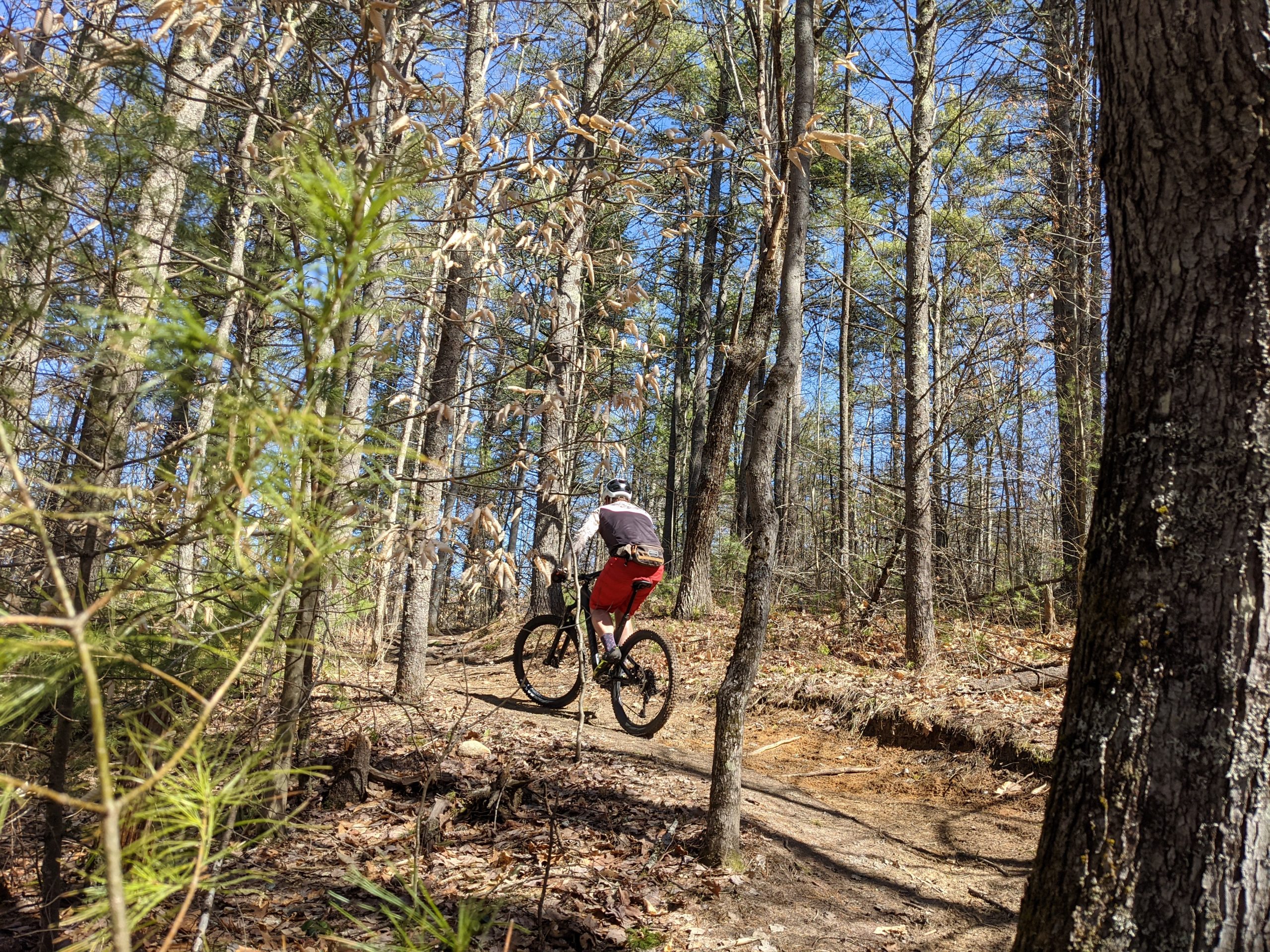Not that long ago, fanny packs were the accessory of choice for jean-shorted, tucked-in-tee-shirted, socks-with-sandals-wearing dads everywhere (well, them and the Rock). At the time, it was unimaginable to their embarrassed children that fanny packs would become the hippest trend in mountain biking.

Why Use a Hip Pack Mountain Biking
Waist packs are much more than an ironic fashion statement, though. There are a bunch of good reasons to bag your big pack and give a hip pack a try.
Minimalism
There is an adage in backpacking that goes no matter how big of a pack a person buys, they’ll find a way to fill it. And the same can be said about mountain bike packs. Indeed, that 14-liter hydration pack you bought for epic full-day rides at Kingdom Trails isn’t ideal for shorter before- or after-work sessions. In general, waist packs are smaller than their backpack brethren and encourage bikers to become more selective about what they bring on a ride. Plus, less stuff means less weight and, hopefully, more miles.
Body Position
Hip packs keep weight low on a rider’s body, which lowers their center of gravity and improves bike handling. Another advantage of carrying the weight around the hips is that it’s less likely to swing around (and splosh in the case of hydration packs) while tackling rowdy and steep lines. These benefits are only enhanced by the generally lighter weight of hip packs.

Breathability
The difference in breathability between traditional backpacks and hip packs is like night and day. While backpacks have come a long way in terms of breathability and employ a variety of technologies to produce a barely-there feel, they just can’t compete with the ability to go “au naturel” that waist packs enable.
Convenience
Want to snack on an energy bar or check your phone to make sure you started Strava? No problem, just spin your hip bag around for easy access to all the essentials—unlike a backpack, which requires you to either take it off or have a friend nearby rummage through it to grab an essential. It’s also easier to find what you’re looking for in a small hip pack than it is in a larger backpack.
Cool
Hip packs are cool, and we’re not just talking about on your back (although we’re big believers in “when you look good, you feel good”). Donning a fanny pack shows that you’re up to date with the latest trends in the sport, a win for those riders everywhere, even those who still wear socks with their sandals.
When to Use a Hip Pack Mountain Biking
Hip packs are infiltrating mountain biking, but it doesn’t mean that backpacks will go extinct anytime soon—both have their time and place. Waist packs are the go-to choice for carrying the essentials on hot laps, shorter rides on familiar trails, and when racing. Conversely, backpacks remain a favorite for all-day rides, winter trips, carrying camera gear, or when riders need to haul a lot of water along, like hot-weather or desert rides.
The Growth of Hip Packs for Mountain Biking
Because hip packs have gained so much traction with mountain bikers, the available options have exploded. Minimalists can find waist packs that hold just the absolute essentials (like keys, phone, tools, tube, and snacks), while the go-big-or-go-home crowd will gravitate toward larger-capacity hip packs with a hydration reservoir and room for extra layers. Those falling more in the middle of the spectrum will find a plethora of options with something to accommodate almost everyone’s riding style and fashion sense.
Have you been hip to riding with a waist pack for a while? If so, what are your best tips for those ditching the backpack and embracing the inner-dorky dad by donning a fanny pack?
Tim Peck and Doug Martland
Tim and Doug met long ago at the Eastern Mountain Sports in Canton, Massachusetts. Bonding over a love of slick Quincy Quarry granite, White Mountain sufferfests, and scheming up adventures while folding tee-shirts, today Tim and Doug collaborate to write about their favorite outdoor activities and occasionally get nostalgic about tee-shirt tables.




